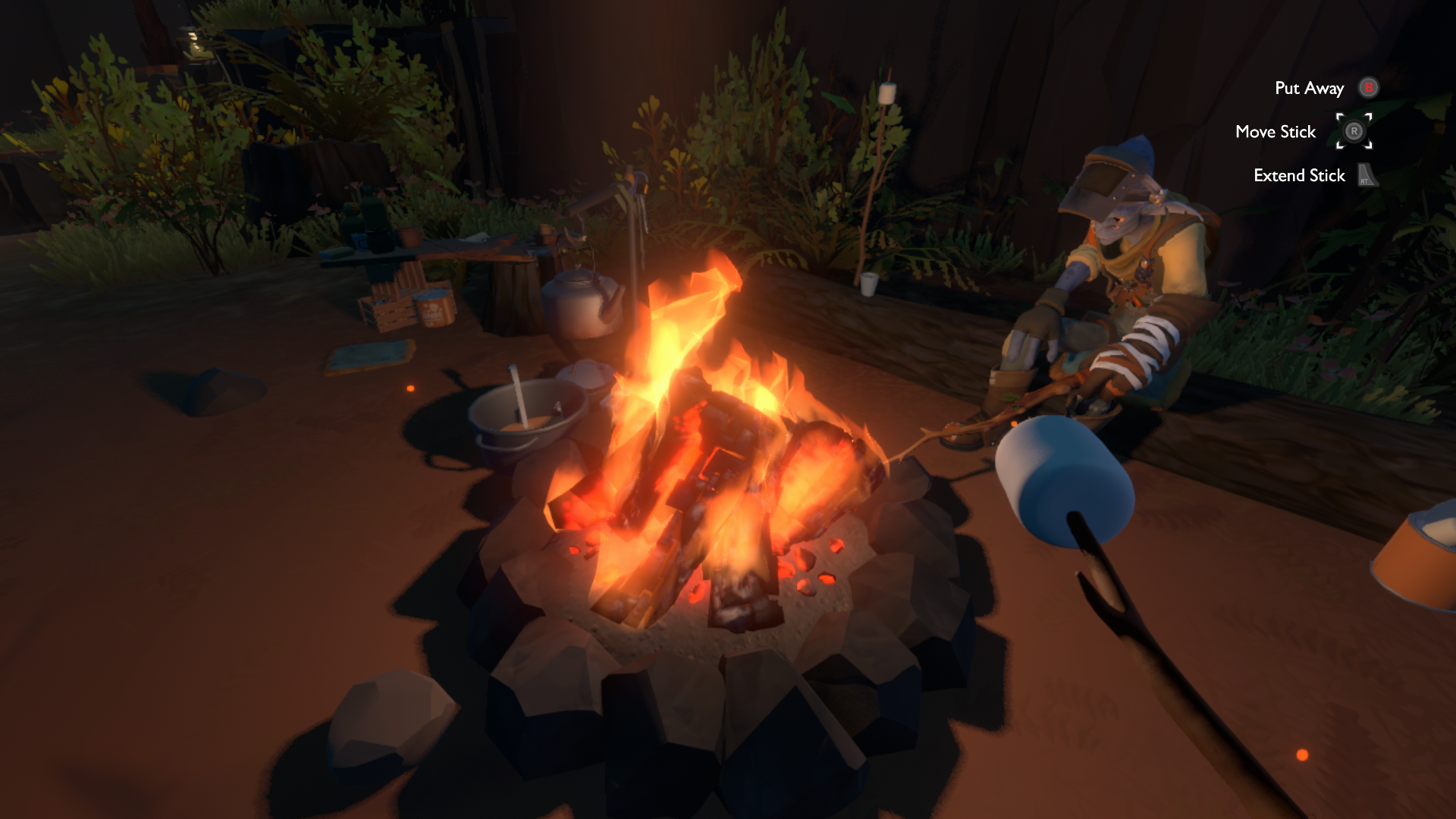Okay, good. The folks who don’t want to be spoiled are gone. Come with me.
So Much Infinity, So Little Time
Unlike No Man’s Sky, a game where you travel across a simulated universe filled with trillions of explorable planets across billions of solar systems, Outer Wilds keeps you constrained to just one. In this tiny solar system, you can visit other parts of Timber Hearth and its moon, the Attlerock; The Hourglass Twins, Ash and Ember; Brittle Hollow and its moon Hollow’s Lantern; the gassy Giant’s Deep; a comet, the Interloper; and the mysterious diseased planet, Dark Bramble. However, you don’t have a lot of time to visit all these celestial bodies, because after 22 minutes of gameplay, the sun explodes.
And this is where the game really gets interesting.
Instead of seeing a “game over” screen,” death simply brings you, your ship and all of the information you’ve collected back to the Hearth. You start over in your sleeping bag under the stars, and it’s once again the morning of your maiden voyage. You don’t have to go back and talk to anyone, because you still have the launch codes memorized; that said, you might get new dialogue with your fellow Hearthians as you discover new paths, so it’s always good to check.
Your overarching goal in Outer Wilds is to find out what happened to a race of beings who came before the Hearthians, called the Nomai. The Nomai left their technology and buildings all around the solar system, and as you pick up more of it your understanding of this universe’s mysteries grows.
The Universe Is Your Obstacle Course
Once you realize that your time is effectively unlimited, you can plan out your runs. How long will it take to get to Ash Twin’s core? How much time do I need to explore what’s inside Giant’s Deep? Where does the black hole at the center of Brittle Hollow go? These are all questions you can answer, but you’ll need to do it within 22 minutes.
And you will need to be careful. Your spacesuit will give you the ability to float in space without dying, but you only have limited oxygen and jetpack fuel, and you’re not invincible. If you crash your ship or fall too fast into a nearby rock, you’re dead, and everything will be reset.
Here’s where I find myself slightly critical of the game mechanics. Everything is floaty, and I don’t mean in space where it’s supposed to be. Even on planets with regular gravity, using the jetpack or flying the ship requires a level of precision that is very hard to pull off with the game’s controls. Dying to environmental hazards because I drifted too far to the left or right and couldn’t stop myself in time can be a little bit frustrating.
However, waking up under the stars each time I respawn is so peaceful. It’s a testament to the game’s soundtrack and seemingly-low stakes that I find myself welcoming the moments right before the sun goes supernova. If I’ve done everything I need to do in a run, I’ll just hop in my ship and give myself a front-row seat to the end, with this as a backdrop:
I haven’t beat Outer Wilds. I have a lot to explore before I get to the end. But when I do, I suspect I’ll be satisfied with any ending I happen to get. This game is wonderful, and I’m glad to have played it. Now I’d like to ask you to do the same. Outer Wilds is available on Xbox One through Game Pass, and also on PC through the Epic Game Store. Go play it, it’s well worth your time.

Response
[…] The Outer Wilds review was a challenge to write, partially because to talk about that game at all requires you to talk about spoilers, but also because it’s such a complex game in general. I needed to figure out a way to talk about the game to my own satisfaction and also give folks a quick idea of what I thought without any of the spoilers in the later paragraphs. […]